Silkworm Gut
Silkworm gut used to be the preferred material for making fly fishing leaders. It is flexible, strong, and very nearly clear; it's amazing that it's actually natural, it looks so much like plastic. PLEASE NOTE: This page shows the dissection of a silkworm for the gut; if you don't want to see that, please don't read on.
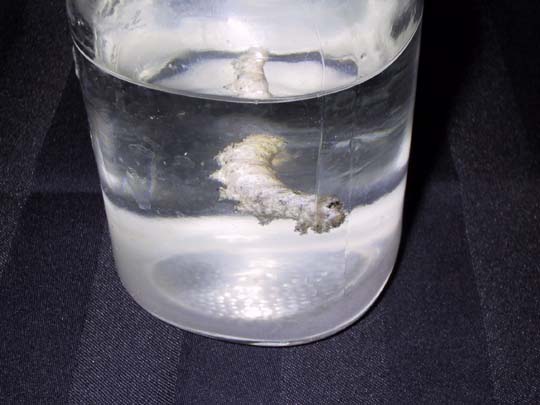
When they are just about ready to spin, having emptied out any undigested food, the worms are dropped into a solution of vinegar and salt. There are various instructions on how salty to make it, but one source says that it's basically as much salt as will dissolve, so that's what I did. The worm floats in the middle of the solution, which is kinda cool looking.
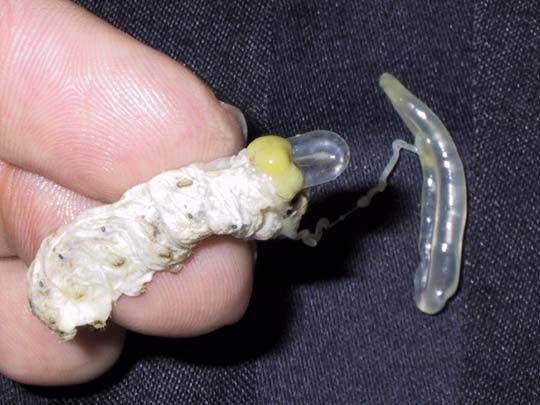
The worm's head is to the right. I've made a small incision in the back, right behind the head. The silk glands practically pop out. They feel soft, slick, and slightly rubbery - like cool hot glue.
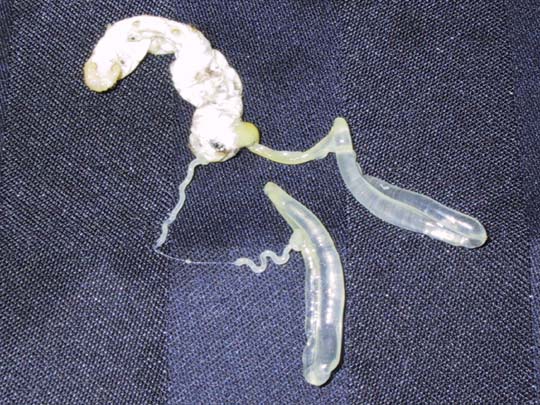
I've always heard that the silkworm at the final stage is mostly silk - but it sure makes it dramatically clear when you see the silk glands separated out like this.
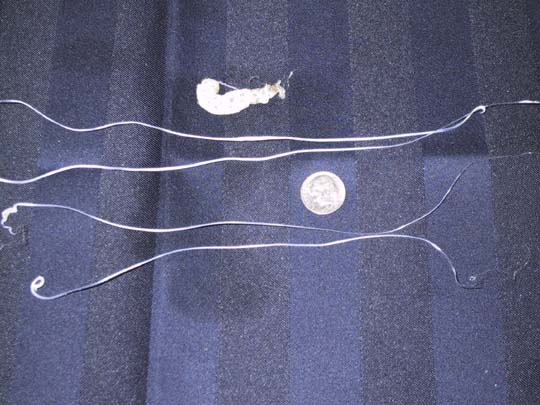
Each gland can be gently tugged and pulled out into a single strand, about 18 inches long. I'm not good at it yet, so I broke each strand into two by tugging it wrong. It's strange, how the strand has a pre-set size - you can definitely tell when the strand is stretched and won't stretch any more.
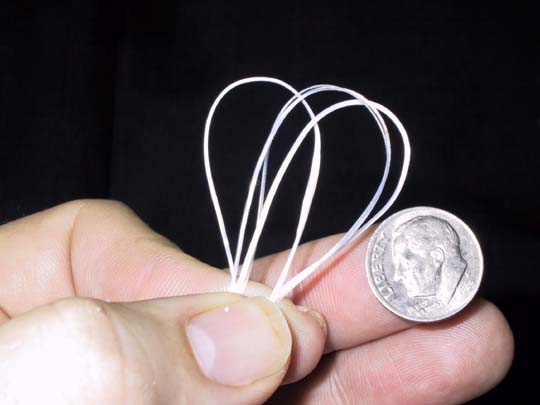
The stretched strands feel a lot like animal sinew. At this stage, they are whitish and opaque.
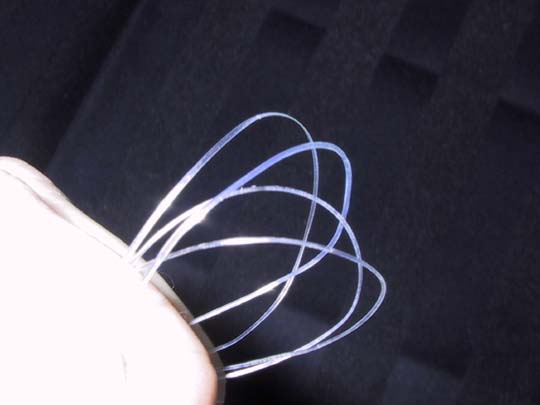
After drying, the strands clarify. I can see why a lot of the old fly-fishing gut was called "mist colored" - this has a slight blue-gray cast, but is clear like nylon monofilament line. If somebody handed me a strand of it, I would automatically assume it was plastic; they don't feel at all like silk.
Before the gut can be used, the "carne" or outer layer needs to be stripped off. I soak the gut strands in plain water for about ten minutes, and scrape off the outer layer. The inner layer is more clear.
I've found someone (actually, he found me!) who makes authentic old-style tied fishing flies. I've read references to the use of silk gut in them, but no clear detailed information on how it's actually put together. These are some photos of a fly-in-progress by Paul Martin.
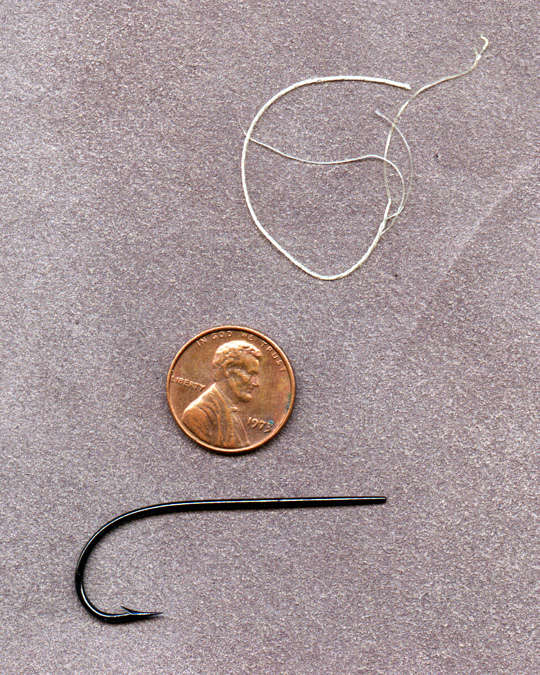
This shows the strands of gut, partly twisted together, and the hook. According
to Paul, this is "a 3/0 Sealey sproat antique hook" - I don't know
anything about antique fishhooks, so please don't ask me what that means. Note
that the non-hook end of the hook (the shank, maybe?) doesn't have an eye -
that's where the silk gut comes in!
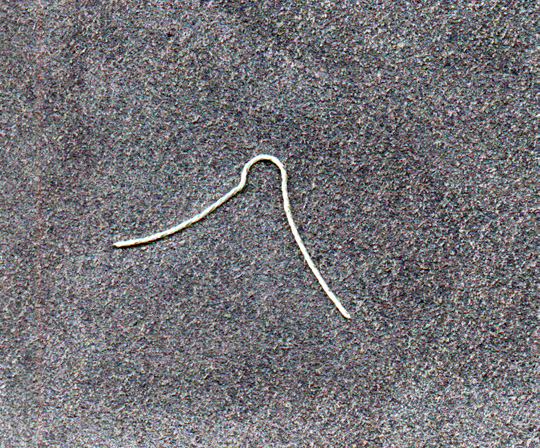
This is the gut twisted and shaped to go onto the hook.

Here, Paul has secured the gut eye to the hook with thread wrapping, and some
"head cement."

This is one of Paul's finished flies; it's his rendition of a Blacker fly from the 1800's. It is not the same hook as the one he's been attaching the gut to in the photos above, but the process is the same. Notice that there is flat (untwisted) dyed silk wrapped onto the body of the fly - that's what makes the yellow colored area toward the hook end. I'm going to make Paul some hand-pulled gut strands, and also dye some flat silk for him from reeled filament.